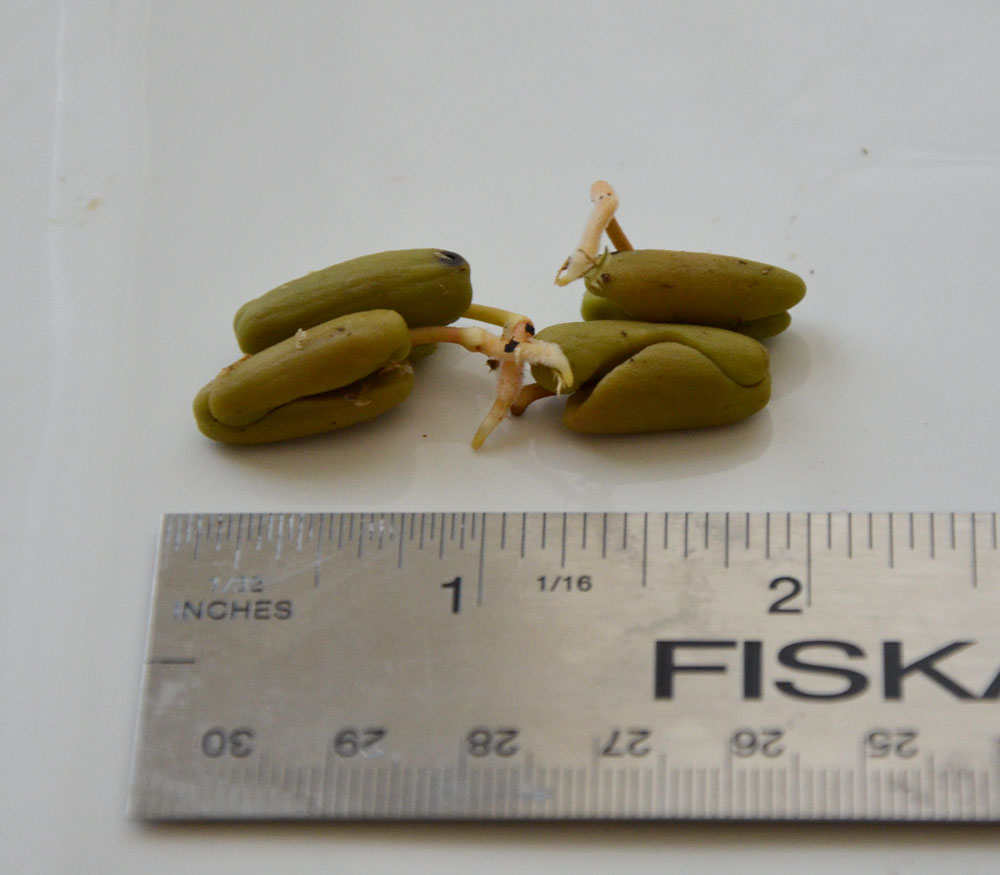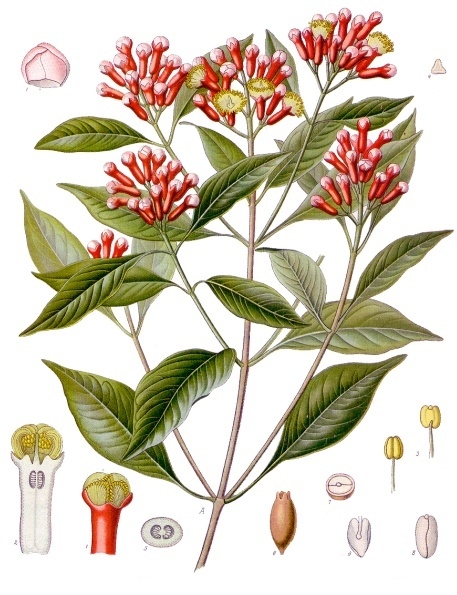Welcome to the third edition of my blog about cloves. Today I will be talking about plant physiology and growth. Firstly I will explain whether cloves are a C3 or C4 plant. Secondly I will explain if cloves are annual, biennial or perennial crops.
Are cloves a C3 or C4 plant?
Firstly I will explain what the difference between a C3 and C4 plant is. Most plant types are C3. During the photosynthesis, C3 plants first form a molecule of 3 Carbon and that is why they are called C3. C3 plants work best in climates were water loss is not a problem, this is due to a problem with the enzyme that traps the CO2. This enzyme also reacts with O2, and due to that 50% of the CO2 is lost in the process of photosynthesis. Due to this loss, the stomata needs to stay open for a longer period, and lose water in the process.
C4 plants firstly form a molecule of 4 Carbon and that is why they are called C4. In comparison with the C3 plants, C4 plants do not react with Oxygen, and the stomata do not need to stay open that long, this makes CO2 trapping way more efficient in C4 plants and water loss is prevented. This prevention of water loss makes C4 plants more able to survive in dry regions of the world.
I could not find direct information about whether cloves are C3 or C4. But following these facts I would classify cloves under the C3 category.
- C4 are drought resistant, and cloves are tropical so definitely not drought resistant.
- Most C4 are grasses, bushes or herbs. Cloves grow on a tree so none of those.
- Lastly I found a source which claims that the only tree with C4 photosynthesis is: Euphorbia. All the other trees (Including cloves) fall under the C3 category.
Are cloves annual, biennial or perennial?
A plants life cycle can be categorised
within 3 groups. These groups are the annuals, biennials and perennials. The
difference between these groups are:
- Annuals complete their life cycle in one year or growing season.
- Biennials complete their life cycle in two years or growing seasons.
- Perennials complete their life cycle in three of more years/growing seasons.
Cloves would be classified under perennials. Clove trees can be harvested for the first time after 5 to 7 years and can after that become hundreds years old if taken good care off. This definitely is a perennial. (Watts, 2017)
Bibliography
https://www.youtube.com/watch?v=Yg_pdXzWXVA
https://www.researchgate.net/post/Do_trees_with_C4_photosynthesis_exist
https://hao.blackboard.nl/bbcswebdav/pid-772679-dt-content-rid-3463613_2/courses/hdb_v_IF2424_1718/Lecture%203%20Plant%20physiology%20and%20growthRevised.pdf
- Annuals complete their life cycle in one year or growing season.
- Biennials complete their life cycle in two years or growing seasons.
- Perennials complete their life cycle in three of more years/growing seasons.
Cloves would be classified under perennials. Clove trees can be harvested for the first time after 5 to 7 years and can after that become hundreds years old if taken good care off. This definitely is a perennial.
Bibliography
https://www.youtube.com/watch?v=Yg_pdXzWXVA
https://www.researchgate.net/post/Do_trees_with_C4_photosynthesis_exist
https://hao.blackboard.nl/bbcswebdav/pid-772679-dt-content-rid-3463613_2/courses/hdb_v_IF2424_1718/Lecture%203%20Plant%20physiology%20and%20growthRevised.pdf


